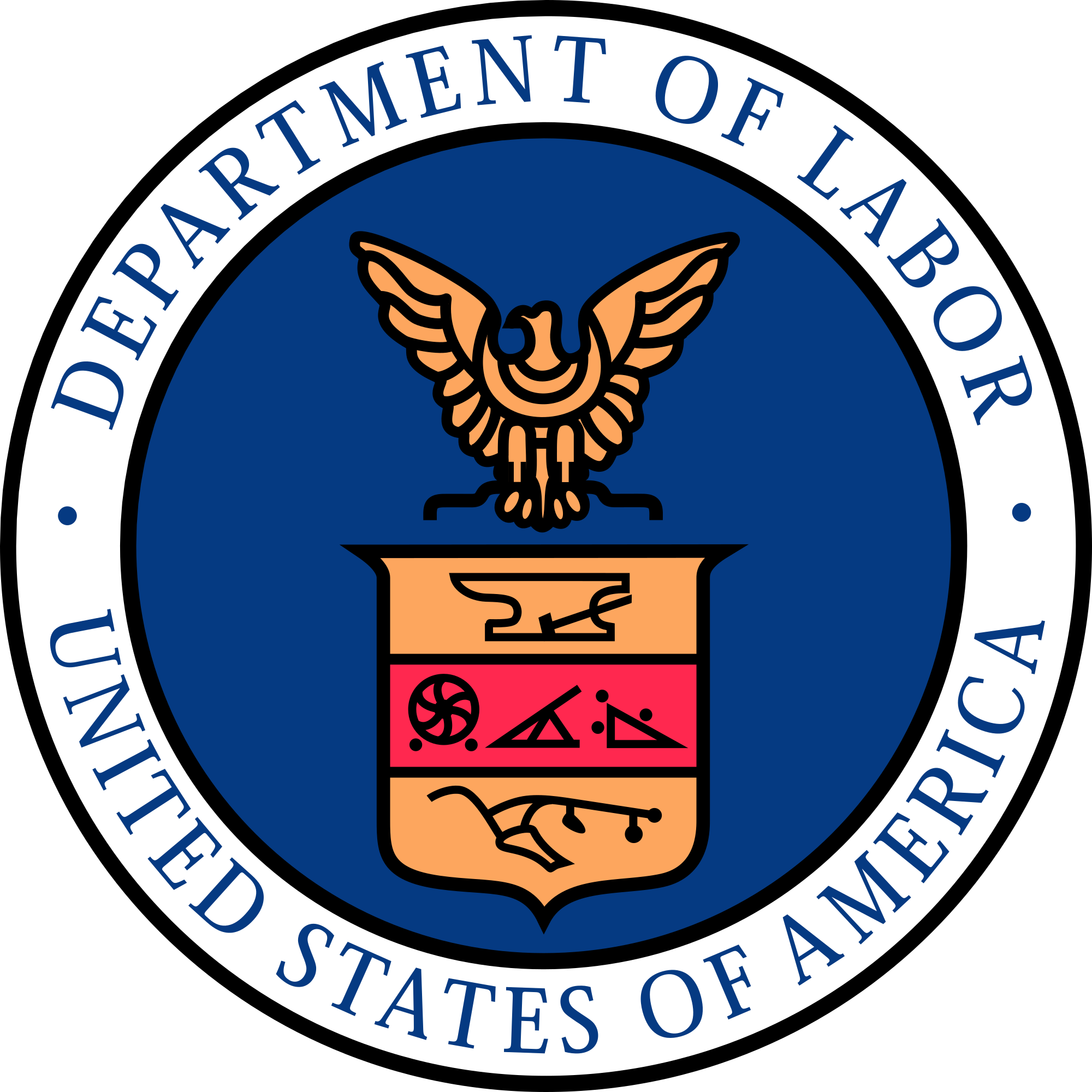
Wednesday, November 8, 2023: US DOL Honored 859 Civilian Employers with 2023 HIRE Vets Medallion Awards

Acting Labor Secretary Julie Su and Assistant Secretary for VETS James Rodriguez presented the awards. The event also featured award recipients sharing how their organizations employ, retain, and otherwise support veterans in the civilian workforce.
“Congratulations to the more than 850 award recipients who understand that tapping into the unique skills and talents of our veterans helps to strengthen their organizations and power our nation’s economic growth,” Acting Secretary Su said in a statement.
You can search for awardees using various filters on the table here. Click here for a map showing the locations of the awardees. Also, see our story on this year’s nomination process here.
We congratulate the many DE Members among this year’s award recipients!
Thursday, November 9, 2023: White House OMB Announced Finalized Revisions to Two Key Guidance Documents Following April Executive Order on “Modernizing Regulatory Review”
Revised Documents Reportedly Reflect the Latest Economic/Scientific Understandings

Context: Rigorous cost-benefit analyses were a legacy of the Carter Administration in the late 1970’s which required their use for certain major regulations. President Carter, a graduate of the U.S. Naval Academy (Class of 1946), was a nuclear engineer in Admiral Hyrum Rickover’s “nuclear Navy.” A major hallmark of President Carter’s presidency was to overhaul decision-making to modernize it requiring all major polices to be tied to rigorous quantitative cost-benefit and management-by-objective analyses. President Carter charged OMB to be the guardian to insure rigor and adherence to those principles.
In recent years, many federal agencies have strayed from supplying OMB with rigorous and credible cost and benefit numbers. At the same time, OMB grew increasingly tolerant of artificially low-cost estimates to allow agencies to proceed with their President’s political agenda (in both Republican and Democrat administrations). For example, federal contractors and employers have complained for years that OFCCP’s and the EEOC’s cost estimates for numerous significant regulatory proposals have been grossly inaccurate and sheer make-believe.
Recently, many industries and companies have successfully challenged the often manifestly faulty “cost burden” estimate pabulum OMB has accepted and approved from regulated agencies trying to increase the impact of their programs on their regulated communities. Courts have enjoined federal agencies from proceeding with regulations predicated on erroneous cost-benefit analyses.
The New Guidance: The revised guidance documents update OMB guidance on how federal agencies calculate costs and benefits (Circular A-4) and how federal agencies may spend federal grant monies (Circular A-94). OMB announced the finalized versions of both Circulars on Thursday and published formal Notices of their availability in the Federal Register on Monday, November 13 (the Circular A-4 Notice is here and the Circular A-94 Notice is here).
OMB’s controversial changes will now shield many federal executive agencies from producing cost analyses when proposing new regulations and also from the need to justify those costs by documenting projected benefits to society greater than the costs to society. NOTE: Most of OFCCP’s Proposed Rules would fall below the new $200 Million rigorous review threshold. Falling below the $200 Million rigorous review threshold will not mean that OFCCP need not submit its proposed Rules for OMB review. Rather, it just means that OMB will give them only a cursory review and will grant their approval “drive-through” privileges much like going to Disneyland with a “Disneyland Speed Pass.”
OMB has chosen to emphasize the modernization of its cost-benefit analyses and not its doubling of the threshold for rigorous analysis of agency proposals or its indexing to cost-of-living costs every three years. Instead, the OIRA announcement states that the Circular A-4 revisions “will help ensure that agencies analyze the consequences of regulations using the most up-to-date economic and scientific understandings.” Circular A-4 covers the valuation of future consequences, the distribution of a policy’s effects, the scope of effects to analyze, and the best way to account for effects that are difficult to monetize, the OIRA said, adding that these topics “are at the core of determining the benefits and costs of regulations.”
The updated Circular A-94 reflects “the latest scientific and economic advances and knowledge, helping ensure that federal funds have the greatest possible impact, from building levees to protect communities to constructing transportation infrastructure to connect them,” according to the OIRA.
How We Got Here
In our April story on EO 14094, we reported OMB contemporaneously published two proposals to revise both Circular A-4 (proposal here) and Circular A-94 (proposal here). Section 3 of EO 14094 specifically directed OMB to update Circular A-4 in accordance with the EO, The public comment periods for both proposals closed on June 6, 2023, with almost 4,500 comments submitted on the Circular A-4 proposal and 50 comments submitted on the Circular A-94 proposal.
What’s Covered?
The revised Circular A-4 runs 93 pages and the revised Circular A-94 runs 28 pages. OMB also posted a 94-page document providing explanations of its decisions that are reflected in the revisions to Circular A-4, as well as responses to public comments. The explanatory document notes that along with the OMB’s solicitation of public comments, an independent and external contractor selected nine peer reviewers and organized a peer review of the proposed revisions to Circular A-4. Moreover, in drafting both the proposed and final revised guidelines, OMB consulted with the Council of Economic Advisers as well as relevant agencies and Executive Office of the President components. The explanatory document also discusses some of the public comments submitted on the Circular A-94 proposal.
Specific aspects discussed in the explanatory document are:
- Scope of Analysis (pages 3-10);
- Developing an Analytic Baseline (pages 10-15);
- Identifying the Potential Needs for Federal Regulatory Action (pages 15-20);
- Alternative Regulatory Approaches (page 21);
- Developing Benefit and Cost Estimates (pages 21-27);
- Other Key Considerations (pages 28-29);
- (Accounting of) Transfers (pages 29-32);
- Distributional Effects (pages 32-52);
- Treatment of Uncertainty (pages 53-56); and
- Discount Rates (pages 57-94).
OMB’s Thursday announcement also highlighted the changes regarding:
- Discounting;
- Distributional Analysis;
- Spatial Scope of Analysis; and
- Non-monetized Effects.
In Brief
Tuesday, November 7, 2023: News Report: Funding Constraints Impair US DOL Enforcement Efforts

See our story on the US DOL’s FY 2024 budget proposal here. For a deep dive into the OFCCP’s FY 2024 budget request, see our story here.
Wednesday, November 8, 2023: U.S. Senate Confirmed Nomination of Current EEOC Chair Burrows for 3rd Commissioner Term

Tim Scott (SC) – did not vote. Less than two hours before the confirmation vote, the Senate voted 51-47 to bring any debate on the nomination to a close. That vote was identical to the later confirmation vote.
Commissioner Burrows is currently the EEOC Chair, and her third term will expire on July 1, 2028. The EEOC’s statement on her confirmation said that, going forward, she intends to focus on “strengthening and deepening the agency’s systemic discrimination work” and supporting “employer efforts to implement and foster lawful and appropriate diversity, equity, inclusion, and accessibility” practices. For more background on this nomination, see our stories here, here, and here.
New Publications
Monday, November 6, 2023: E-Verify announced a new, eight-minute, on-demand video, “E-Verify At-A-Glance!”
Thursday, November 9, 2023: The National Institute of Standards and Technology (“NIST”) announced a new video on “NIST Responsibilities Under Executive Order on Safe, Secure and Trustworthy AI” (for background, see our story here)
Monday, November 13, 2023: U.S. Justice Department published “Questions and Answers on the Application of the ADA’s Integration Mandate and Olmstead v. L.C. to Employment and Day Services for People With Disabilities; Notice of Availability” (for background, see our story here)
Looking Ahead:
Upcoming Date Reminders
There are no NEW items added to our calendar this week:
June 2023: U.S. DOL WHD’s current target date (now overdue) to publish its Final Rule on Nondisplacement of Qualified Workers Under Service Contracts (RIN: 1235-AA42)
June 2023: U.S. OSHA’s current target date (now overdue) to publish its Final Rule on Occupational Exposure to COVID-19 in Healthcare Settings (RIN: 1218-AD36)
August 2023: U.S. DOL WHD’s (now overdue) target date for its Final Rule on Employee or Independent Contractor Classification Under the Fair Labor Standards Act (RIN: 1235-AA43)
August 2023: U.S. NLRB’s (now overdue) target date for its Final Election Protection Rule (RIN: 3142-AA22)
August 2023: U.S. DOL’s OASAM’s (now overdue) target date to publish Proposed Rule on “Revision of the Regulations Implementing Section 188 of the Workforce Innovation and Opportunity Act (WIOA) to Clarify Nondiscrimination and Equal Opportunity Requirements and Obligations Related to Sex” (RIN: 1291-AA44)
November 13, 2023: Deadline for comments on OSHA’s union-friendly proposal to revise its Worker Walkaround Representative Designation Process (previous October 30 deadline extended)
November 15, 2023 (5:30 pm – 7:00 pm ET): US DOL ODEP’s third “stakeholder engagement session” on Section 14(c) subminimum wage program; for more information, see our story here.
November 20, 2023: Deadline for comments on the Census Bureau’s Proposal to Test Questions on Sexual Orientation & Gender Identity for the American Community Survey
November 27, 2023: Comments due on the U.S. Office of Personnel Management’s Interim Final Rule to extend the eligibility date for noncompetitive appointment of military spouses married to a member of the armed forces on active duty through December 31, 2028
December 5, 2023: Submission deadline for EEO-1 Survey Component 1 Data Collection (collection period opened on October 31, 2023)
December 5, 2023: Comments due on the White House Office of Management and Budget’s proposed guidance to federal agencies on how they should implement Biden’s Executive Order on Artificial Intelligence
December 26, 2023: NLRB’s Direct Final Rule revising its procedures governing representation elections takes effect
December 26, 2023: Effective date of NLRB’s Final Rule on Standard for Determining Joint-Employer Status (under the NLRA)
December 29, 2023: Statutory deadline for EEOC to finalize regulations to enforce the Pregnant Workers Fairness Act
December 2023: OFCCP’s current target date for its Notice of Proposed Rulemaking to “Modernize” Supply & Service Contractor Regulations (RIN: 1250-AA13)
December 2023: OFCCP’s current target date for its Final Rule on “Technical Amendments” to Update Jurisdictional Thresholds & Remove Gender Assumptive Pronouns (RIN: 1250-AA16)
January 1, 2024: U.S. DOL OSHA’s Final Rule Requiring Covered High-Hazard Industry Employers to Electronically Submit Injury & Illness Records takes effect
April 3 – April 5, 2024: DEAMcon24 New Orleans
January 1, 2024: The minimum wage for federal contracts covered by Executive Order 13658 (“Establishing a Minimum Wage for Contractors”) (contracts entered into, renewed, or extended prior to January 30, 2022), will increase to $12.90 per hour, and the minimum cash wage for tipped employees increases to $9.05 per hour (See our story here detailing exceptions)
January 1, 2024: The minimum wage for federal contractors covered by Executive Order 14026 (“Increasing the Minimum Wage for Federal Contractors”) (contracts entered into on or after January 30, 2022, or that are renewed or extended on or after January 30, 2022), will increase to $17.20 per hour, and this minimum wage rate will apply to non-tipped and tipped employees alike (See our story here detailing exceptions)
June 2024: OFCCP’s current target date for its Notice of Proposed Rulemaking to Require Reporting of Subcontractors (RIN: 1250-AA15)
THIS COLUMN IS MEANT TO ASSIST IN A GENERAL UNDERSTANDING OF THE CURRENT LAW AND PRACTICE RELATING TO OFCCP. IT IS NOT TO BE REGARDED AS LEGAL ADVICE. COMPANIES OR INDIVIDUALS WITH PARTICULAR QUESTIONS SHOULD SEEK ADVICE OF COUNSEL.
SUBSCRIBE.
Subscribe to receive alerts, news and updates on all things related to OFCCP compliance as it applies to federal contractors.
OFCCP Compliance Text Alerts
Get OFCCP compliance alerts on your cell phone. Text the word compliance to 18668693326 and confirm your subscription. Provider message and data rates may apply.


